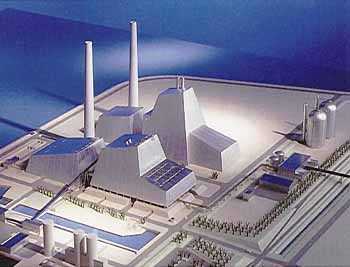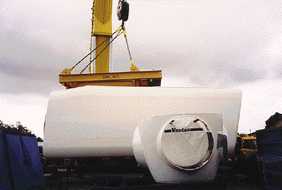Stability of Structures
Introduction
Staff members of ES-Consult have many years of experience in solving complicated
stability problems related to structures. The problems have included flexural
buckling of elements, lateral torsional buckling of beams, plate buckling
and combinations of these forms of instability phenomena.
Some problems have been solved as genuine research or development projects
and the results have been published in distinguished international journals.
Other problems have been related to specific structures where a deeper
analysis has led to optimum and economic solutions.
Special Assignments
In
connection with the design of buildings for power plants a special type
of column was needed to transfer the very high loads from the boiler girders.
This column required a high load-carrying capacity with respect to plane
and torsional buckling combined with good material economy and the
possibility of simple connections with the other structural elements. The
solution was a column with a cruciform cross section for which the load
bearing capacity with respect to torsional buckling was markedly improved
by an arrangement of battens providing a "vierendeel effect".
Similarly, a method has been developed for restraining compression elements
in triangulated bracing structures in connection with the design of buildings
for power plants. Instead of using secondary lattice elements, a simple
connection between tension and compression members resulted in simpler
detailing.
In connection with the design of pipelines, an evaluation has been made
of the stability of the tubes under longitudinal compression due to a rise
of the temperature. The tubes are regarded as beam-columns in an elastic
medium. The assessment had to take into account the fact that the elastic
restraint only acted for downward deflections. For upward deflection the
transverse load stems from the self-weight and the overlying earth
masses.
As another example of a stability problem that the firm has investigated,
we mention a research project dealing with the improvement of the capacity
of beams with respect to lateral-torsional buckling. The solution suggested
was to weld tube-shaped transverse stiffeners to the web of the beam. The
torsional rigidity of the tubes decisively reduces the tendency of the
beam cross section to warp and thus increases the critical buckling load.
The method has been made operational by developing a computer programme
for solving the resulting differential equations. In a cooperation with
The Technical University of Denmark the method has been verified by laboratory
tests. The tests showed good agreement with the theory and thereby verified
the applicability of the method.
Top
| |


